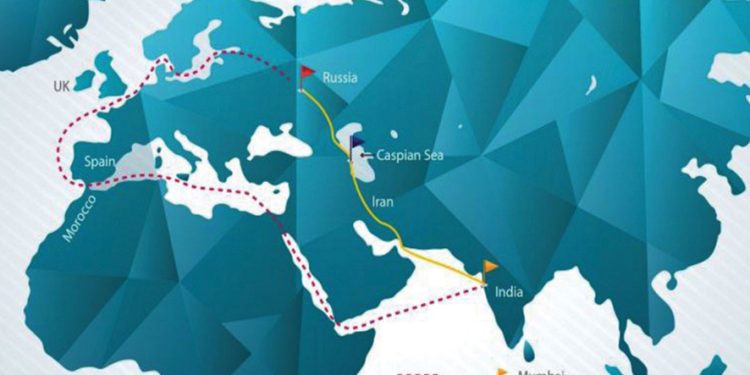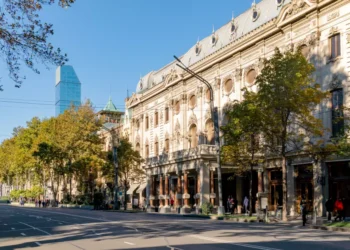Amid the regional shifts and more broadly global reverberations caused by the war in Ukraine, the South Caucasus is experiencing radical changes in its position on the Eurasian map. Some shifts are more dramatic, others less so, but they nevertheless have been accelerated with the instability in the wider Black Sea region.
Like other important regions, the South Caucasus, in particular Georgia, are experiencing an emerging new order. In the South Caucasus, as in the Middle East, there is now an abundance of big players. It is difficult to remember any other such period in the history of Georgia or the Caucasus in general, when so many big players were simultaneously so actively involved in the struggle for influence.
Two periods can be taken from the history of the region when three powers (Arabs, Byzantium and Khazars in the 7th century, and Russia, Persia and the Ottomans at the beginning of the 19th century) competed for influence; today, there are six: the European Union (EU), Turkey, Iran, Russia, the US, and to a certain extent China. Such diversity, along with multiple challenges, also brings many geopolitical opportunities. Both the “middle powers” and small countries as Georgia, Azerbaijan and Armenia, now have more room to maneuver.
A second long-term trend should also be highlighted. The South Caucasus is increasingly considered in tandem with Central Asia. On the map, these two geographical spaces in the middle of Eurasia create a corridor that connects the EU and China (two big economic players). What happens in Central Asia directly affects the South Caucasus, and vice versa. This is well realized in the EU, China and Russia. The battle for the heart of Eurasia, the so-called “Middle Corridor,” or the New Silk Road, will become increasingly intense.
Yet the region is not only turning into an interconnection between east and west, but also a geography linking Russia to the Middle East, primarily Iran and more broadly the so-called Global South. The International North-South Transport Corridor (INSTC), created as an ambitious project in the early 2000s, has, with Russia’s invasion of Ukraine, quickly developed into a route through which massive trade flows, going from Russia to Iran and India, and vice versa. One of the branches of the INSTC runs through the western shore of the Caspian Sea.
The INSTC has not developed solely based on the current political context across Eurasia: For centuries, if not millennia, the Caspian Sea and both sides of its served as veritable corridors for connecting the steppe zones and rich Middle Eastern countries. Nowadays, it is Russia and the Middle East. Yet, despite modern technologies, geography persists, which makes the INSTC all the more interesting.
The South Caucasus is turning into a north-south and east-west connectivity hub. This is a continuation of a long-historic patten, and is also an acceleration of it. Growing intelinkedness also invites multiple regional and non-regional powers to increase their influence in the South Caucasus.
Global connectivity changes run in parallel with attempts to revitalize long-abandoned railway links within the South Caucasus itself. Armenia and Azerbaijan have long been negotiating a comprehensive peace treaty. Success has only been partial, and there will likely be numerous rounds of negotiations until the two sides reach a consensus. But what is evident is the understanding by both sides that road and railway links must be restored, which in a broader picture will add another east-west connection line between Turkey and the Caspian Sea.
Long-term geopolitical trends in Eurasia promise the South Caucasus the chance to become a region able to connect large economic centers of the continent. Never before has it been so well positioned to play such a role. In ancient or medieval times, for only short period of times was there prosperity and a high level of economic connectivity with the outside world. The South Caucasus was mostly peripheral to the economies of empires. Today’s increasing level of connectivity will help the economies of the South Caucasus countries. It will also increase the number of challenges. But one trend is obvious: when the region was dominated by one or two powers, it mostly suffered from warfare and economic downturns. In contrast, now there is a tendency to have numerous actors involved in the South Caucasus, and with it, the welcome diversity of opportunities.
Analysis by Emil Avdaliani
Emil Avdaliani is a professor at European University and the Director of Middle East Studies at the Georgian think-tank, Geocase.














